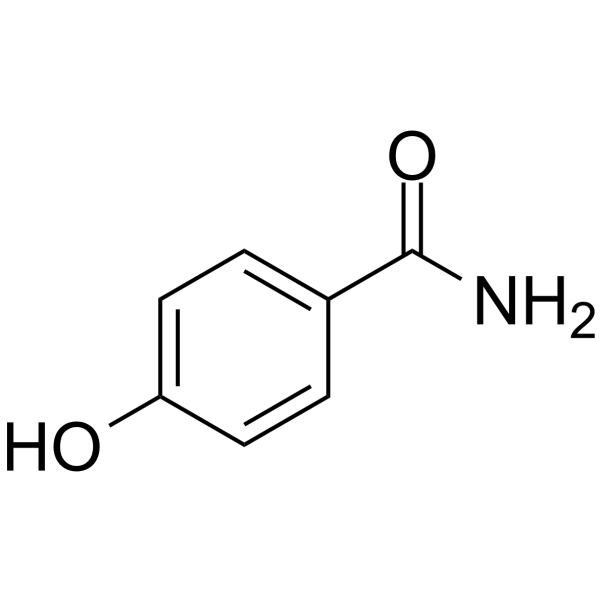Energetics of the O-H bond and of intramolecular hydrogen bonding in HOC6H4C(O)Y (Y = H, CH3, CH2CH=CH2, C[triple bond]CH, CH2F, NH2, NHCH3, NO2, OH, OCH3, OCN, CN, F, Cl, SH, and SCH3) compounds.
Carlos E S Bernardes, Manuel E Minas da Piedade
Index: J. Phys. Chem. A 112(40) , 10029-39, (2008)
Full Text: HTML
Abstract
The energetics of the phenolic O-H bond in a series of 2- and 4-HOC 6H 4C(O)Y (Y = H, CH3, CH 2CH=CH2, C[triple bond]CH, CH2F, NH2, NHCH 3, NO2, OH, OCH3, OCN, CN, F, Cl, SH, and SCH3) compounds and of the intramolecular O...H hydrogen bond in 2-HOC 6H 4C(O)Y, was investigated by using a combination of experimental and theoretical methods. The standard molar enthalpies of formation of 2-hydroxybenzaldehyde (2HBA), 4-hydroxybenzaldehyde (4HBA), 2'-hydroxyacetophenone (2HAP), 2-hydroxybenzamide (2HBM), and 4-hydroxybenzamide (4HBM), at 298.15 K, were determined by micro- or macrocombustion calorimetry. The corresponding enthalpies of vaporization or sublimation were also measured by Calvet drop-calorimetry and Knudsen effusion measurements. The combination of the obtained experimental data led to Delta f H m (o)(2HBA, g) = -238.3 +/- 2.5 kJ.mol (-1), DeltafHm(o)(4HBA, g) = -220.3 +/- 2.0 kJ.mol(-1), Delta f H m (o)(2HAP, g) = -291.8 +/- 2.1 kJ.mol(-1), DeltafHm(o)(2HBM, g) = -304.8 +/- 1.5 kJ.mol (-1), and DeltafHm(o) (4HBM, g) = -278.4 +/- 2.4 kJ.mol (-1). These values, were used to assess the predictions of the B3LYP/6-31G(d,p), B3LYP/6-311+G(d,p), B3LYP/aug-cc-pVDZ, B3P86/6-31G(d,p), B3P86/6-311+G(d,p), B3P86/aug-cc-pVDZ, and CBS-QB3 methods, for the enthalpies of a series of isodesmic gas phase reactions. In general, the CBS-QB3 method was able to reproduce the experimental enthalpies of reaction within their uncertainties. The B3LYP/6-311+G(d,p) method, with a slightly poorer accuracy than the CBS-QB3 approach, achieved the best performance of the tested DFT models. It was further used to analyze the trends of the intramolecular O...H hydrogen bond in 2-HOC 6H 4C(O)Y evaluated by the ortho-para method and to compare the energetics of the phenolic O-H bond in 2- and 4-HOC 6H 4C(O)Y compounds. It was concluded that the O-H bond "strength" is systematically larger for 2-hydroxybenzoyl than for the corresponding 4-hydroxybenzoyl isomers mainly due to the presence of the intramolecular O...H hydrogen bond in the 2-isomers. The observed differences are, however, significantly dependent on the nature of the substituent Y, in particular, when an intramolecular H-bond can be present in the radical obtained upon cleavage of the O-H bond.
Related Compounds
| Structure | Name/CAS No. | Molecular Formula | Articles |
|---|---|---|---|
 |
4-Hydroxybenzamide
CAS:619-57-8 |
C7H7NO2 |
|
Influence of Secondary Interactions on the Structure, Sublim...
2015-08-20 [J. Phys. Chem. B 119 , 10466-77, (2015)] |
|
Synthesis and protein kinase C inhibitory activities of bala...
1997-01-17 [J. Med. Chem. 40(2) , 226-35, (1997)] |
|
Cocrystal screening of hydroxybenzamides with benzoic acid d...
2014-12-18 [Eur. J. Pharm. Sci. 65 , 56-64, (2014)] |
|
A novel complex of a phenolic derivative with insulin: struc...
1996-08-01 [Protein Sci. 5(8) , 1502-11, (1996)] |
|
Structure-based design of achiral, nonpeptidic hydroxybenzam...
1996-09-01 [Bioorg. Med. Chem. 4(9) , 1471-80, (1996)] |